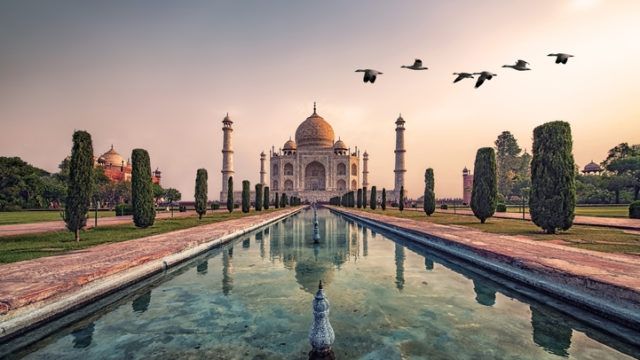India is set to overtake China this year as the world’s most populous state, according to data released by the United Nations this week. With the IMF predicting that together the two countries will account for half of global economic growth in 2023, what are the main drivers behind India’s ever-increasing output and how are investors taking advantage of the opportunities the nation presents?
India Capital Growth Fund adviser Gaurav Narain says that, following a period of reform between 2015-2019 in which over 40,000 rules and regulations were altered, introduced, or scrapped, the country has emerged into a new era of economic growth.
He says: “The period was quite challenging for the country itself. Growth had come off. Before, the country was growing at 6%, 7% or 8%, it came down to 4%-4.5%. But (the reforms) created the foundation for a very strong business environment for the future and the benefits are now being reaped.”
Narain also highlights the Indian government’s increased focus on growth, with approximately $1.8trn infrastructure investments over the next five years set to aid a further upturn in economic activity in the country. “The economy is doing well, everything is in place and the focus of the government is not on firefighting, but on growth.”
With foundations laid by reform, several long-term drivers of growth are benefitting India across a range of sectors, according to Fidelity Emerging Markets portfolio manager Nick Price.
He says: “We think that the Indian market is a strong structural growth story. India benefits from several long-term drivers, with the economy offering considerable scope for growth given its low level of GDP per capita and growing working-age population. We expect growing consumption and demand for consumer goods, financial and IT services going forward.
“There are also a number of near-term tailwinds for the country. India has not gone through a capex cycle for ten years and we have seen balance sheets strengthen at the corporate level, as well as the credit growth cycle accelerate. We also expect an increase in government spending over 2023, given that 2024 is an election year in India.”
Despite these drivers, the country is not immune to the macroeconomic headwinds facing the global economy.
Matthews Asia portfolio manager Peeyush Mittal says: “It’s not all a bed of roses. Like many other economies, inflation is biting in India and domestic consumer demand weakened notably in the third quarter of FY23. Critics argue that the Modi government should be doing more to boost consumption and incentivise business but it’s not clear the government will heed the call. Even during the pandemic years, the government didn’t intervene too much on the demand side—focusing more on supply supports and tools for increasing capacity and production.”
Geopolitics and supply chain relocation
India could also stand to benefit from rising tensions between the US and China as companies seek to relocate their supply chains. India has already experienced an influx within its manufacturing sector, with fund managers pointing to Apple’s decision to relocate part of its manufacturing business to the country as an example.
India Capital Growth’s Narain says: “India is now the fifth largest economy in the world with very strong leadership, it has a voice of its own. It’s able to, in some sense, dictate its terms and is also in the process of commanding a lot of respect.
“The business climate is very healthy in the domestic economy. If I see anything upsetting India it is more likely to be the global macro side, and I think this whole global environment is actually being played to India’s advantage in one sense as the supply chain dislocation is accelerating the shift of manufacturing into countries like India.”
Fidelity’s Price adds: “We expect companies across industries to benefit from higher demand, as global businesses look to adjust their supply chain reliance on China and shift it towards countries such as India. This includes companies operating in sectors that are more directly impacted, such as electronics components makers, but also those that will experience a knock-on effect, such as IT and financial services businesses.”
However, for non-domestic investors a key barrier to the Indian equity market is its price. Arnab Das, global market strategist at Invesco, says: “Foreign portfolio investors face a conundrum. India’s growth prospects are strong, but the equity market is perennially very expensive. The bond market is restricted by tight quotas for foreign investors, which is probably no bad thing — the separation of funding for the fiscal deficit by domestic investors and the external deficit by foreign investors probably reduces the risk of balance of payments crisis — but probably also distorts portfolio flows into equity markets, keeping them more expensive than otherwise.
“Even more important is the role of financialisation and financial inclusion, which is driving up domestic savings and retail investor flows into the domestic equity market — also holding prices up above international valuations. The floating currency is volatile, which helps to mitigate the risk of a balance of payment crisis, but complicates the life of foreign investors in India’s domestic markets.”
World’s most populous country
Das continues: “In many ways, now should be India’s moment. It has just overtaken China as the world’s most populous country. It is now poised to remain the world’s fastest growing major economy on a trend basis.
“A young, growing population promises an important demographic dividend even as most other large economies, developed and emerging alike, are poised to age significantly, and in some important cases to join Japan in both ageing and shrinking over time. Indeed, India’s demographic dividend is matched only by Africa, a continent of many countries which also has strong prospects, as well as posing major challenges for corporate and portfolio investors.”
Summing up India’s investment potential, Ayush Abhijeet, adviser of the Ashoka India Equity Investment Trust, says the tailwinds benefitting the country provides an exposure to key sectors set to grow further in the coming years.
He concludes: “Despite the many macro and geopolitical challenges over the last few years, there are some critical identifiable themes such as digitalisation, decarbonisation, new-age consumption, modern healthcare and infrastructure, which present a sizeable runway for growth.
“Incidentally, India is among the few markets that capture the full bouquet of these opportunities, apart from possessing the full complement of appropriate market conditions backed by pro-progress government policies that aim to deliver sustainable growth over the long term.”
This story first appeared on our sister publication, Portfolio Adviser.

















